Buying and eating healthy vegetarian whole foods is often a painfully expensive pleasure. Organic products, fresh fruits and vegetables, plant milks, special flours, nuts and seeds can easily crash any family budget. We can definitely vouch for that. For the last couple of years, our food expenses have doubtlessly been our highest cost each month. We have prioritized paying more for food and less for clothes and other stuff. But this doesn’t mean that we are just splurging away without looking at the price tag of that organic coconut oil. It’s quite the opposite. We make constant efforts to plan how, where and what we buy and what we eat, in order to reduce expenses.
With this in mind, we have decided to start a new series on the blog called Healthy Eating on a Budget. We will share tasty and wholesome recipes that are affordable, along with some tips on how to eat well without blowing your savings away. First out is this hearty Mung Bean Stew that will keep you warm and nourished during the cold months. Dried pulses, frozen spinach and only a can of coconut milk makes it a very affordable recipe. Adjust the recipe with any beans or lentils or your choice.
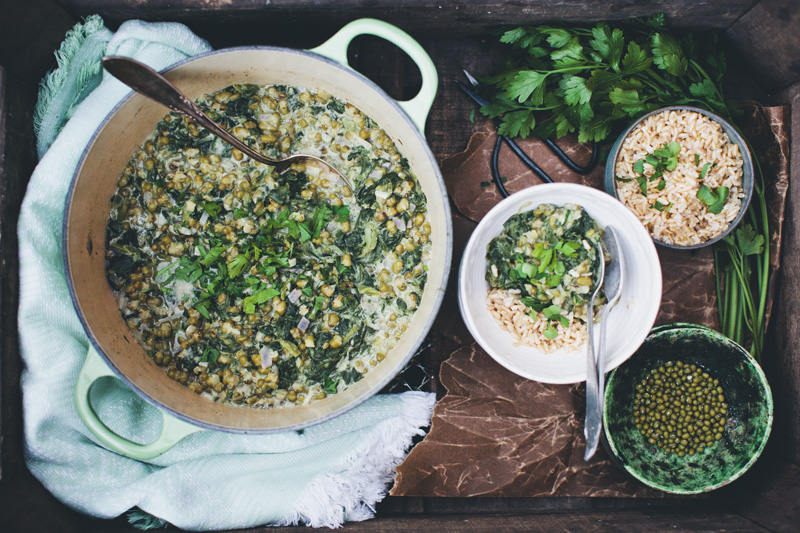
Here are some general tips on how to eat healthy vegetarian whole foods on a budget:
- Choose dried. Dried pulses like lentils and beans are always cheap and easy to bulk up on. Soak, cook and freeze in portions.
- Remember the season. Vegetables and fruit in season are always more affordable. Adapt ingredients in recipes after what are in season in your country. If a recipe calls for sweet potato you can use carrots instead, etc.
- Double the recipe. Cook and bake large batches of your meals, freeze the leftovers and use for lunch/dinner throughout the week.
- Alternative organic brands. Most large supermarkets have their own organic or fair-trade product line which is cheaper than other small brands.
- Natural super food. Skip the fancy super food powders. Go for kale, apple, carrot, sweet potato, potato, leek, onion, pumpkin/squash, broccoli, beet, tomato, tomato concentrate, cabbage, egg, banana, almonds, rolled oats, whole grain rice, quinoa, flax seeds, berries, coconut oil, olive oil and tea. All of these ingredients are real super foods too.
- Don’t skip the frozen section.Frozen vegetables and fruit are always in season; they are often on sale and are actually full of nutrients. They are usually picked, cleaned and frozen within a very short time-span, which means they contain more nutrients than the supermarket vegetables lying on the shelves for weeks.
- Love seeds. Seeds are cheaper than nuts and can replace them in most recipes. Pumpkin seeds, sesame seeds, sunflower seeds, flax seeds, buckwheat and psyllium seeds. All high in protein, healthy fat and lots of minerals and vitamins.
- Prioritize the dirty dozen. Choosing organic and GMO-free fruit and vegetables can be really expensive and almost impossible on a budget. Check out the ‘dirty dozen’ list over which produce has the highest pesticide residues and which do not. Then you can prioritize your purchase. Buy the highest quality of what you eat the most.
- Supplements. Choose only the really important supplements like a high quality basic vitamin/mineral supplement and a high quality EPA/DHA fish oil supplement. It is better to take high quality supplements every other day than a bad quality everyday.
If you feel like sharing your own personal budget tips, we’d love to hear them!
Mung Bean Stew & Whole Grain Rice
Serves 4-6
2 cups dried mung beans, soaked in water for 8-12 hours
1 tbsp coconut oil, ghee or olive oil
1 onion, finely chopped
4 garlic cloves, finely chopped
1 tsp ground cumin
400 g frozen spinach, thawed
6 cups water
1 tsp sea salt
1 x 400 ml can full fat coconut milk
1,5 cups whole grain rice
3 cups water
1 tsp sea salt
Heat oil in a sauce pan, add onion, garlic and cumin. Sauté until fragrant, stir occasionally. Add spinach, soaked mung beans and water, cover and bring to boil. Lower the heat to medium-low and let cook for 30-40 minutes or until the beans are soft. Turn off the heat and stir in coconut milk. Ready to serve.
Put rice and water into a small pot and bring to a boil over medium-high heat. Reduce heat to medium-low, cover and let simmer until liquid is completely absorbed and rice is just tender, about 40 minutes. No peeking or stirring. Set covered pot aside off of the heat for 10 minutes.
********************************************
**UPDATE** Thank you so much for all the applications. We will now select the 10 clients and contact you very soon.
As many of you know Luise is studying to become a certified Nutritional Therapist. This Spring she and another student will do 10 cases with clients for their examination. We want you to get the opportunity to apply for those 10 spots. If you are interested and fulfil the criteria below please send an email to luise@gkitchenstories.com along with some background information about yourself and which health issues you would like us to help you with. We will contact you at the end of januari if you are one of the 10. The consultations are for free and the information will be used anonymous in our examination material.
The criteria for applying are following:
• you are able to attend two consultations in Stockholm and one Skype consultation
• you are willing to make lifestyle or/and diet changes
• you are able to pay for some tests, for example a hair mineral analyse or a hormone test
• you are able to pay for supplements, like vitamins and minerals
• you have a specific health issue you want help to solve

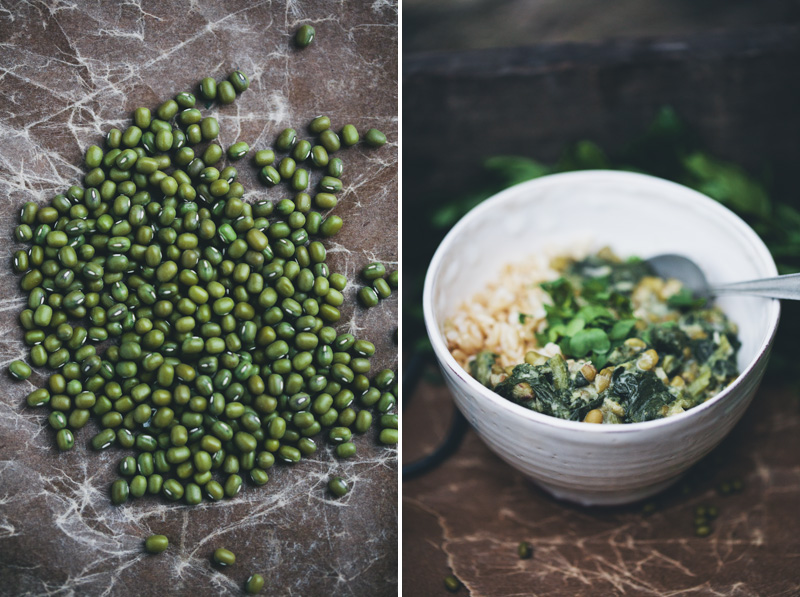


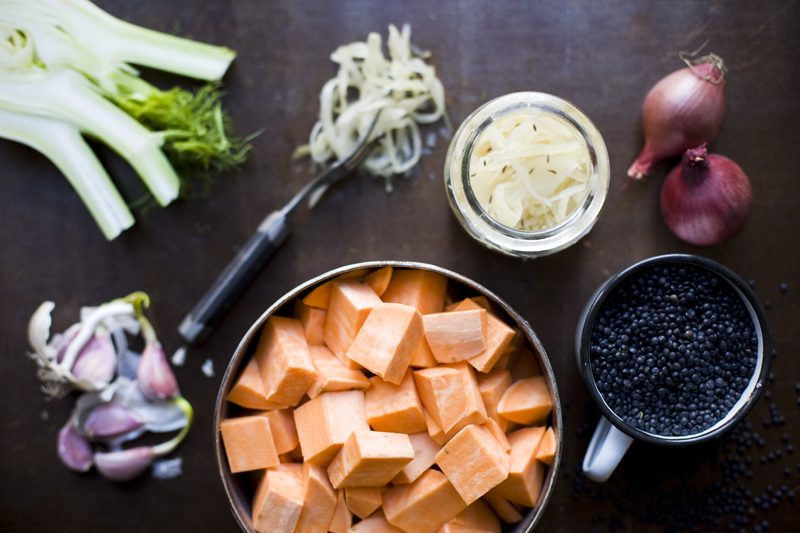

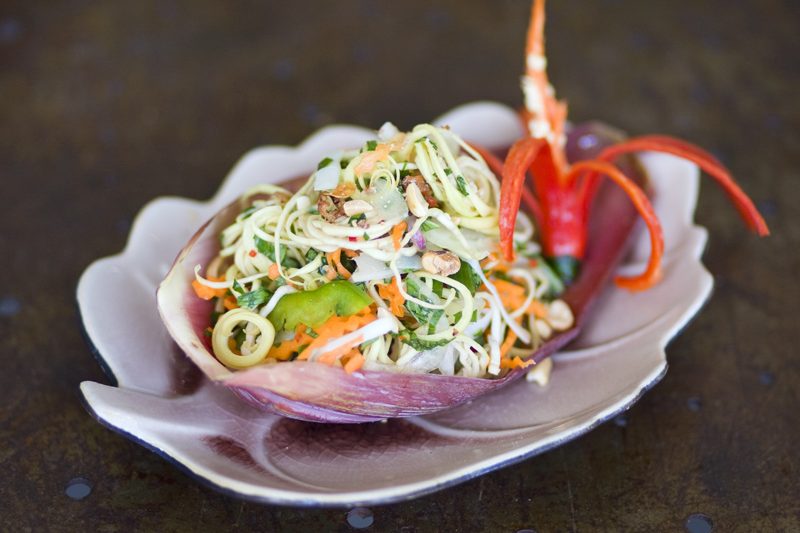
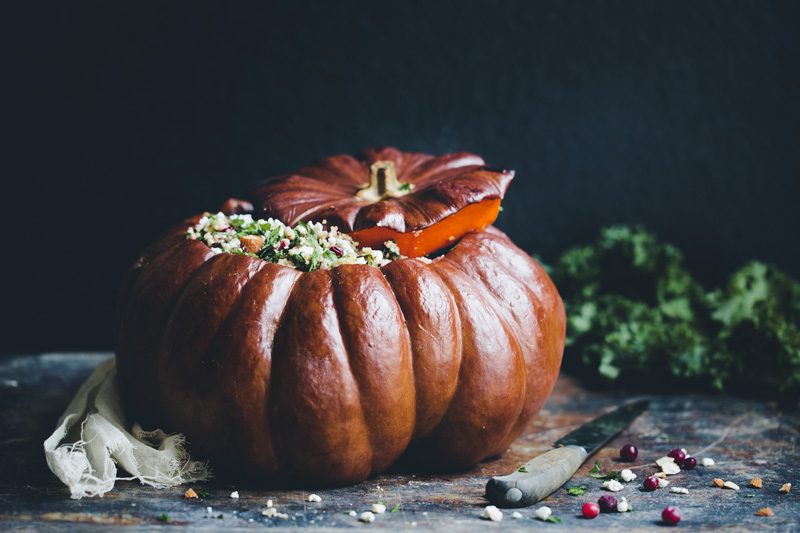
112 Comments